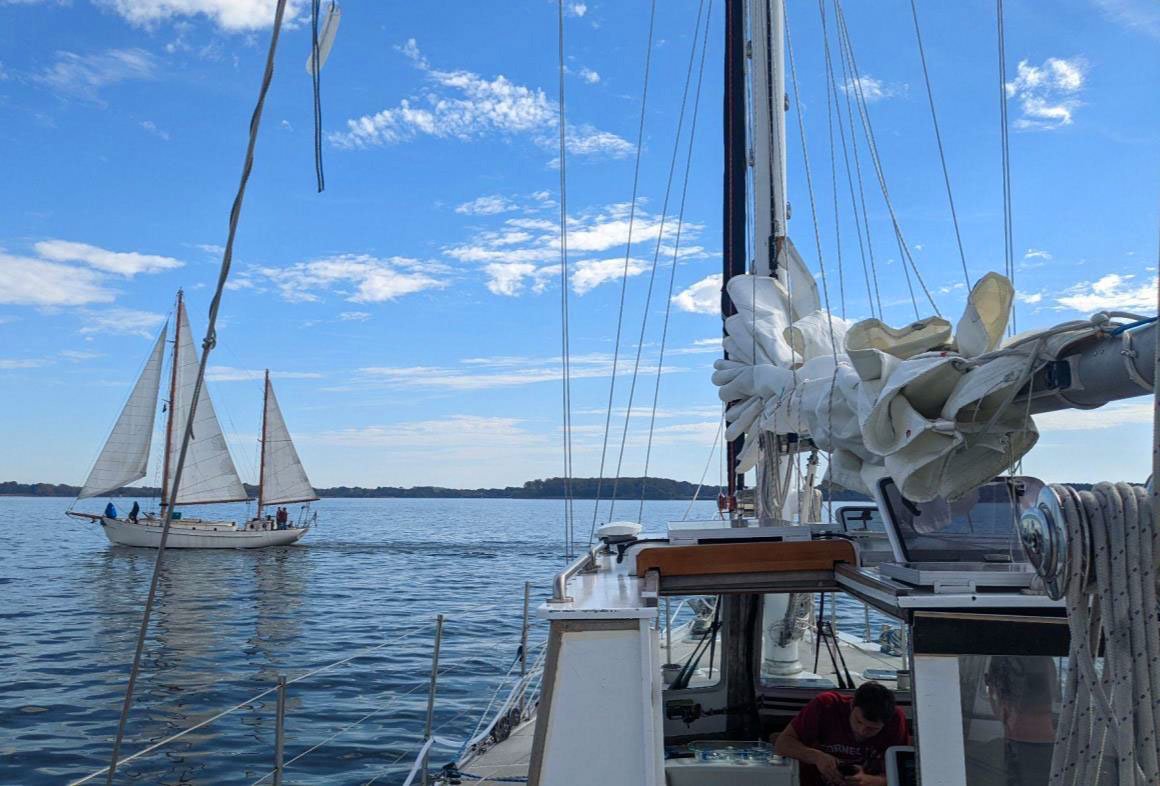
2023 Impact Grant
Ocean Research Project
Annapolis, MD
1-year $100,000 Impact Grant (2023)
ocean research project - annapolis, maryland
Pilot Study to Grade Chesapeake Bay’s Plastic Pollution
Founded in 2012, Ocean Research Project is dedicated to reversing humanity’s negative impact on the ocean through science, exploration, and education.
ORP is forging a new path of discovery by combining modern technology with age-old efficiency to create lower-cost research expeditions that provide an effective alternative to the more costly, big science paradigm. ORP’s research objectives are from close collaborations with scientists focusing on the most critical environmental issues.
ORP designs sailing expeditions to enable small, core teams of researchers to gather critical data from remote, sensitive areas worldwide. These observations allow a better understanding of the decisive factors impacting the ocean’s health. By sharing this information broadly, ORP is determined to increase public awareness, especially among younger generations, and inspire change to protect the ocean and foster a thriving marine environment.
impact grant project: “Pilot Study to Grade Chesapeake Bay’s Plastic Pollution”
ORP is working to change human behavior by providing information about the abundance of single-use plastics and their environmental effects. The intent of the ORP Project is to seed an ongoing monitoring effort for plastics pollution trends in the Chesapeake Bay watershed. The Chesapeake Bay Program is the “responsible party” charged with finding a path to assess Bay-wide plastic pollution and will benefit from the pilot project exploring plastic particle count as a water quality indicator for monitoring future Bay health. In cooperation with its partners, ORP hopes to repeat this project biannually to enrich understanding of the Bay-wide magnitude of plastic pollution, export to the ocean, and how that is changing relative to Bay improvements and climate change.
ORP’s study will be the first to determine particle concentration of plastic pollution across the United States’ largest estuary, the Chesapeake Bay. The information from this pilot project will be used inform a dedicated multi-year sampling program by the Chesapeake Bay Program partners at the federal, state, and local levels.
More than 18 million people live within the Chesapeake Bay watershed, a critical ecological and recreational resource that has been severely impacted by plastics pollution. Plastics can be ingested by and entangle marine species; they also accumulate in coastal vegetation and sediments. The ORP Project will conduct the first plastic particle count study to better understand the extent of this category of pollution in the upper water column for each tributary in the region and bay-wide. Specifically, the project will assess the plastic particle count in near surface waters of defined transects over two sampling events during the funding period.
Graduate students, area undergraduate students, and local K-12 STEM public school students will conduct the sample analysis. The SRV Marie Tharp (sampling sailing vessel) will visit transects during periods for high flow discharge of all rivers in Spring and low flow periods in late Fall, sampling plastics via a novel, innovative, flow-through system pumping near surface seawater into the boat’s lab to automatically filter the particles by size classes. The flow-through approach will allow larger quantities of bay water to be filtered, essential for a good sampling size of plastic particles per region and transect, while recording flowmeter and GPS positioning data. Particles will then be bottled for post-lab processing. Post-lab processing will be performed graduate students who will allow separate the plastics from the biological matter.
After the sample processing is complete, undergraduate, K-12, and community lab members at the Baltimore Underground Science Space (BUGGS)2 will systematically count total plastic particles and determine the number and composition (film, foam, line, pellet, fragment). Occasional water samples will be saved for genetic testing of the microbial, plankton, zooplankton, and pelagic species associated with plastic impaired water samples. The University Maryland Center for Environmental Science Report Card / Integration and Application Network (IAN) will aid in documenting and educating onboard student’s in the use of multimedia to communicate their scientific data and activity. IAN will also assist in developing high quality graphics for the key project deliverable, a high-end Map Infographic.
MEET Ocean research project
ORP is dedicated to scientific exploration under sail in pursuit of the knowledge necessary to better understand human-induced stress on the Ocean.
ORP co-director Matt Rutherford @ TEDx / Jacksonville
ORP co-director Matt Rutherford is the first person ever to complete a non-stop, single-handed voyage around the Americas. His experience inspired him to found ORP to study solutions to plastics polluting the Earth’s oceans.
The RV Marie Tharp
ORP’s expedition schooner RV Marie Tharp is a 72’ Bruce Roberts Voyager 650. More info.
project final product: infographic map
Woodard & Curran Foundation is the principle funder of the project’s final product: a Bay-wide map infographic that will clearly inform the public of the extent of this new Bay health water quality indicator. The Infographic will be shared with the National Oceanic and Atmospheric Administration (NOAA), the Chesapeake Bay Foundation, and the media. Future efforts to build in this pilot work will include cross-referencing report card grades with environmental and social indicators (median income, housing affordability, income inequality) to aid in prioritizing land-based plastic source management strategies.
The intent of the ORP Project is to seed an ongoing monitoring effort for plastics pollution trends in the Chesapeake Bay watershed. The Chesapeake Bay Program is the “responsible party” charged with finding a path to assess Bay-wide plastic pollution and will benefit from the pilot project exploring plastic particle count as a water quality indicator for monitoring future Bay health. In cooperation with its partners, ORP hopes to repeat this project biannually to enrich understanding of the Bay-wide magnitude of plastic pollution, export to the ocean, and how that is changing relative to Bay improvements and climate change.
““Ocean Research Project is dedicated to observing and exploring at-risk environments.””


